Advertisements
Advertisements
प्रश्न
ABCD is a trapezium in which side AB is parallel to side DC. P is the mid-point of side AD. IF Q is a point on the Side BC such that the segment PQ is parallel to DC, prove that PQ = `(1)/(2)("AB" + "DC")`.
उत्तर
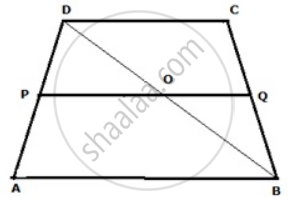
PQ || DC ⇒ OQ || DC ||AB
Therefore, Q and O are mid-points of BC and BD respectively.
In ΔABD,
P and O are mid-points of AD and BD respectively
⇒ OP = `(1)/(2)"AB"` ........(i)
In ΔBCD,
Q and O are mid-points of BC and BD respectively
⇒ OQ = `(1)/(2)"CD"` ........(ii)
Adding (i) and (ii)
OP + OQ = `(1)/(2)"AB" + (1)/(2)"CD"`
⇒ PQ = `(1)/(2)("AB" + "CD")`.
APPEARS IN
संबंधित प्रश्न
SN and QM are perpendiculars to the diagonal PR of parallelogram PQRS.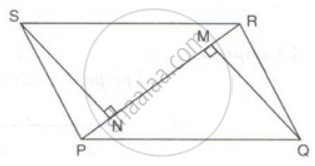
Prove that:
(i) ΔSNR ≅ ΔQMP
(ii) SN = QM
ABCD is a parallelogram. P and T are points on AB and DC respectively and AP = CT. Prove that PT and BD bisect each other.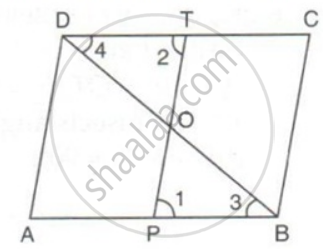
PQRS is a parallelogram. PQ is produced to T so that PQ = QT. Prove that PQ = QT. Prove that ST bisects QR.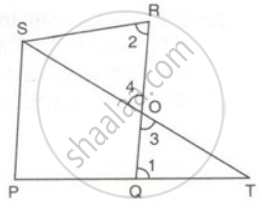
ABCD is a rectangle with ∠ADB = 55°, calculate ∠ABD.
ABCD is a quadrilateral P, Q, R and S are the mid-points of AB, BC, CD and AD. Prove that PQRS is a parallelogram.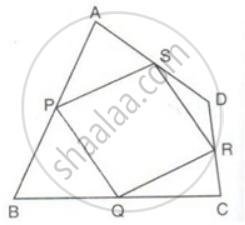
PQRS is a parallelogram. T is the mid-point of RS and M is a point on the diagonal PR such that MR = `(1)/(4)"PR"`. TM is joined and extended to cut QR at N. Prove that QN = RN.
In a parallelogram PQRS, M and N are the midpoints of the opposite sides PQ and RS respectively. Prove that
RN and RM trisect QS.
Prove that the diagonals of a square are equal and perpendicular to each other.
Prove that the diagonals of a parallelogram divide it into four triangles of equal area.
The diagonals AC and BC of a quadrilateral ABCD intersect at O. Prove that if BO = OD, then areas of ΔABC an ΔADC area equal.
